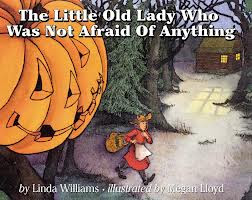"How do you decide what materials you are going to charge for?"
"How do you decide how much to charge for your materials?"
"Why do some blogs have advertising and some do not?"
"Do you plan on reducing the number of freebies and start charging for all of your materials?"
These are some of the questions I've been asked lately. I figured if many people were asking, probably more were wondering. So, here goes:
 I discovered the world of SLP blogs in January of this year, shortly after I discovered Pinterest. I thought it was wonderful that so many creative SLPs were putting their ideas out there and sharing with the rest of us. I loved the idea of an online community as well and I wanted in! (Check out this post from CC at If Only I Had Super Powers on social/pragmatic skills for the blogging community). In June, I had some extra time on my hands (Hello, Summer!) and figured that was the perfect time to start!
I discovered the world of SLP blogs in January of this year, shortly after I discovered Pinterest. I thought it was wonderful that so many creative SLPs were putting their ideas out there and sharing with the rest of us. I loved the idea of an online community as well and I wanted in! (Check out this post from CC at If Only I Had Super Powers on social/pragmatic skills for the blogging community). In June, I had some extra time on my hands (Hello, Summer!) and figured that was the perfect time to start! 
Let me tell you, when I started, I had so much to learn (still do!)! For instance, did you know that Mayer Johnson does not allow SLPs to create materials using Boardmaker PCS icons and share them free of charge in files not original to Boardmaker? This means that they do NOT want you to create a PDF and share files made with their software to people who do not have Boardmaker. Mayer Johnson prefers you to share activities created with Boardmaker on the Boardmaker Share site. My first activity that I uploaded was created using Boardmaker PCS. When I learned this, I had to scramble to get it down, remove the PCS, and add other graphics. Interestingly, Mayer Johnson DOES allow you to sell materials that are made with less than 50 PCS!
 |
| by Scrappin Doodles |
Now, I never got into this blogging venture to MAKE money, but I certainly did not get in it to LOSE money! So, I added advertising to my page. Well, most people don't click advertising links, so that was not paying for the graphics/licenses. I then became an Amazon affiliate and added links to Amazon for my "Book of the Week."
 That still doesn't cover the cost of graphics, so I decided to add a few paid items to my TPT store. That's been more helpful! (Thank you to those of you who have purchased items!!!). How do I decide which items to sell? Typically those that are larger files and have taken a lot of time to create are the ones that I put up for a fee. I like to keep costs low, so I don't charge more than a few dollars. I do not have the "paid" seller account at TPT, so I actually get a little less than half of the total price of the item!
That still doesn't cover the cost of graphics, so I decided to add a few paid items to my TPT store. That's been more helpful! (Thank you to those of you who have purchased items!!!). How do I decide which items to sell? Typically those that are larger files and have taken a lot of time to create are the ones that I put up for a fee. I like to keep costs low, so I don't charge more than a few dollars. I do not have the "paid" seller account at TPT, so I actually get a little less than half of the total price of the item! I think that covers all but the last question. The answer to that one is "yes and no" - While I DO plan to add more paid items to my TPT store, I DO NOT plan to charge for all or most of the materials I post.
The bottom line is that blogging is a labor of love. It takes a lot of time, effort, and sometimes money to create new materials to share (whether freebies or paid). Offering materials free of charge or for a fee is a personal decision for all bloggers. If bloggers decide to charge for an item, consider purchasing it if it meets your needs! When a blogger offers a free of charge item, support that decision by posting a "thank you" comment. Comments on blogs and Facebook pages are always welcome and appreciated and motivate us to keep doing what we're doing!
Hope that answers some of your questions and helps you understand (at least from my perspective) why some materials are free and others are not!






































.png)
+copy.png)




